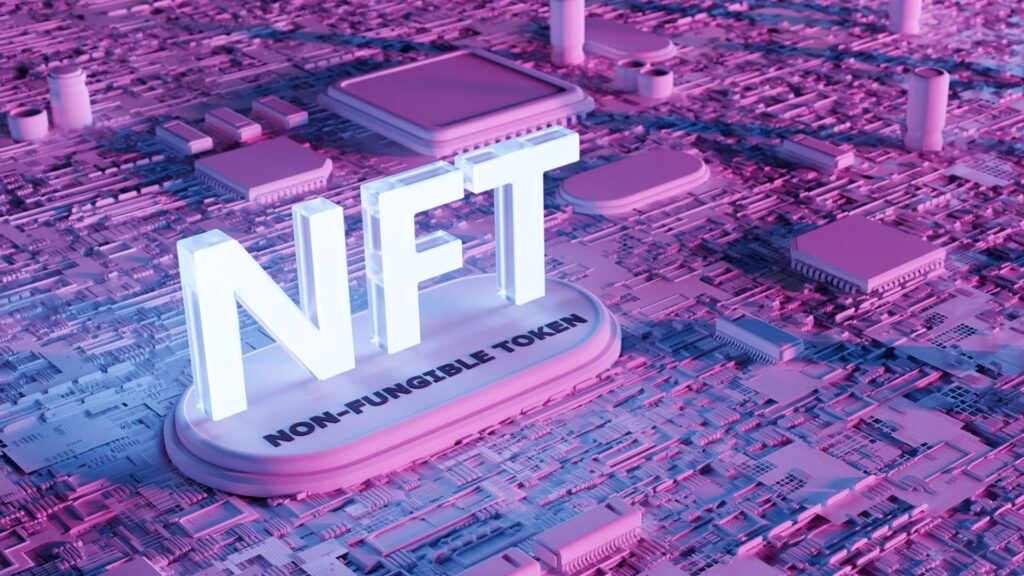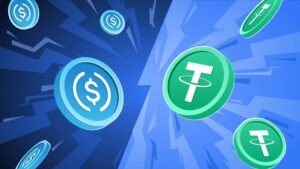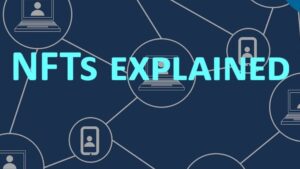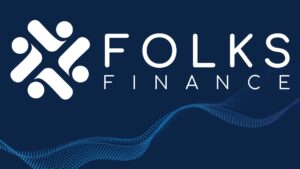In recent years, one term has taken the digital world by storm—NFTs, or Non-Fungible Tokens. These unique digital assets have transformed the way we think about ownership, creativity, and value on the internet. From billion-dollar art sales to blockchain-based gaming and music royalties, NFTs have become one of the most discussed innovations in modern technology.
NFTs Explained, really? Is it just another passing crypto trend, or a glimpse into the future of how we buy, sell, and own digital things? This guide will help you understand everything about NFTs, including their meaning, technology, use cases, risks, and long-term potential. Whether you’re an investor, creator, or simply curious about the buzz, this article offers a clear, in-depth explanation of what makes NFTs so revolutionary.
Basics: What Is an NFT?
The term NFTs Explained stands for Non-Fungible Token. In simple terms, it’s a unique digital certificate stored on a blockchain that represents ownership or proof of authenticity for a specific digital item—such as artwork, music, videos, in-game assets, or collectables.
To understand NFTs better, let’s break down the word non-fungible. Something “fungible” is interchangeable; for example, a Bitcoin or a dollar bill can be exchanged for another of the same kind. However, something “non-fungible” is unique and cannot be swapped on a one-to-one basis. Each NFT is one-of-a-kind, much like a rare painting or collectable trading card.
NFTs are built using blockchain technology, typically on platforms like Ethereum, Solana, or Polygon, ensuring transparent, secure, and tamper-proof ownership records.
How NFTs Work: The Technology Behind Them

At their core, NFTs are powered by smart contracts, which are self-executing programs that run on blockchains. When someone creates—or “mints”—an NFT, a unique digital token is generated and recorded on the blockchain.
This token contains key information such as:
-
The creator’s address
-
A unique identifier (metadata)
-
Links to the digital file or asset it represents
Even though anyone can view the digital item associated with an NFT, ownership belongs exclusively to the person holding the token in their crypto wallet. Think of it as owning the original digital signature of a famous artwork, even though others can see its copies online.
The use of Ethereum’s ERC-721 and ERC-1155 standards has made NFTs widely compatible across marketplaces like OpenSea, Rarible, and Magic Eden. These standards define how NFTs are created and transferred between users, ensuring they function across different apps and platforms.
The Evolution of NFTs: From Concept to Global Phenomenon
NFTs didn’t appear overnight. Their origin can be traced back to early blockchain experiments around 2012–2014, such as Colored Coins on Bitcoin and CryptoPunks on Ethereum. However, the real explosion occurred in 2021, when digital artist Beeple sold his NFT artwork “Everydays: The First 5000 Days” for over $69 million at Christie’s auction.
This sale marked a turning point, proving that digital art could hold immense real-world value. Soon, celebrities, brands, and major corporations began entering the NFT space. Companies like Nike, Adidas, Gucci, and Coca-Cola launched NFT-based campaigns, while musicians like Snoop Dogg and The Weeknd released exclusive NFT tracks.
The NFT market rapidly evolved into a multi-billion-dollar industry, blending creativity, investment, and technology into a new digital economy.
What Gives NFTs Their Value?
One of the biggest questions people ask is: Why are NFTs valuable?
The value of an NFT depends on several key factors:
-
Scarcity and Uniqueness: Each NFT is distinct, often part of a limited collection. Rarity adds value.
-
Creator Reputation: NFTs created by well-known artists, brands, or influencers often sell for higher prices.
-
Utility: Some NFTs provide benefits like event access, in-game perks, or royalties.
-
Community and Demand: The more people desire a particular NFT collection, the more its market value increases.
For instance, collections like Bored Ape Yacht Club (BAYC) became status symbols in the crypto world because of their exclusivity and community-driven benefits.
Types of NFTs
While digital art might be the most famous category, NFTs span a wide range of industries:
Art and Collectables
Artists use NFTs to tokenise their digital works, ensuring authenticity and receiving royalties on secondary sales.
Gaming NFTs
Games like Axie Infinity and The Sandbox use NFTs for in-game assets, giving players ownership and the ability to trade items freely.
Music and Media
Musicians can release exclusive albums or tracks as NFTs, bypassing traditional record labels and retaining greater creative control.
Virtual Real Estate
In metaverse platforms like Decentraland and The Sandbox, NFTs represent ownership of virtual land, which users can buy, sell, or develop.
Fashion and Luxury Brands
High-end brands are merging NFTs with digital fashion, allowing users to own exclusive virtual outfits or redeemable physical items.
Identity and Certification

NFTs are also being explored for digital identity, education credentials, and even property titles—areas where secure, verifiable ownership is crucial.
How to Buy and Sell NFTs
If you want to enter the NFT market, the process is straightforward but requires some basic setup:
-
Get a Digital Wallet: You’ll need a crypto wallet like MetaMask, Trust Wallet, or Coinbase Wallet to store your NFTs.
-
Buy Cryptocurrency: Most NFTs are priced in Ethereum (ETH) or Solana (SOL), so purchase some crypto through an exchange.
-
Choose a Marketplace: Platforms like OpenSea, Blur, and Magic Eden allow you to browse, bid, and buy NFTs.
-
Mint or Resell: Creators can mint new NFTs, while traders can resell existing ones for profit.
All transactions are recorded on the blockchain, ensuring transparency and security.
Are NFTs Safe? Risks and Challenges
While NFTs offer exciting possibilities, they’re not without risks.
Volatility is a major concern—the NFT market can fluctuate dramatically, with prices dropping as quickly as they rise. Additionally, fraudulent NFTs and scams have become common, with fake collections or unauthorised copies being sold.
Another challenge is environmental impact, especially for NFTs minted on energy-intensive blockchains. However, newer solutions like Ethereum’s shift to Proof-of-Stake (PoS) and eco-friendly chains like Polygon and Flow have made NFTs more sustainable.
Lastly, intellectual property rights remain a grey area. Owning an NFT doesn’t always mean owning the copyright—it simply proves ownership of that specific digital token.
The Role of NFTs in the Metaverse
As the concept of the metaverse expands, NFTs are becoming the backbone of digital identity and ownership in virtual worlds.
Imagine owning a virtual home, wearing designer digital clothes, or attending a concert in the metaverse—all through NFTs. These tokens allow users to bring verifiable ownership into immersive digital spaces, creating a real economy that bridges virtual and physical realities.
Companies like Meta (Facebook), Microsoft, and Epic Games are investing heavily in metaverse development, and NFTs are expected to play a central role in shaping how digital assets function within these ecosystems.
NFT Marketplaces: Where the Magic Happens
NFT marketplaces are the lifeblood of the NFT economy. They act as digital galleries and trading hubs for creators and collectors alike.
OpenSea remains the largest and most popular platform, hosting millions of NFTs across various blockchains. Rarible, SuperRare, and Foundation cater more to art-focused communities, while gaming NFTs often trade on Immutable X or Magic Eden.
Each marketplace uses smart contracts to facilitate secure transfers and royalties, ensuring artists earn commissions every time their work resells.
The Future of NFTs: Beyond Art and Hype
NFTs are far more than digital collectables—they’re a gateway to tokenised ownership across industries. Future innovations could see NFTs used in:
-
Real estate transactions (tokenising property deeds)
-
Event ticketing (eliminating counterfeits)
-
Supply chain transparency
-
Digital identity and authentication
As blockchain technology matures, NFTs will likely integrate deeper into finance, entertainment, and education, making digital ownership a standard part of online life.
Are NFTs Here to Stay?
Despite market fluctuations and scepticism, NFTs have proven they’re not just a fad. They’ve redefined the concept of digital scarcity and creator empowerment, offering new opportunities for artists, businesses, and investors.
While the initial hype has cooled, innovation continues. Developers are exploring dynamic NFTs, which evolve, and fractional NFTs, which allow shared ownership of high-value assets. These advancements will likely shape the next phase of NFT growth.
Conclusion
NFTs (Non-Fungible Tokens) represent one of the most significant technological shifts in the digital era. They combine blockchain transparency, creative ownership, and economic innovation in a way the world has never seen before.
From digital art and gaming to real-world assets, NFTs are rewriting the rules of ownership and commerce. While challenges remain—such as market volatility, regulation, and environmental concerns—the underlying concept of verifiable digital uniqueness is here to stay.
As blockchain adoption grows, NFTs could become the foundation of how humans interact, trade, and express value in the digital age.
Frequently Asked Questions (FAQs)
Q: What does NFT stand for?
NFT stands for Non-Fungible Token, meaning a digital asset that’s unique and cannot be replaced by another identical item.
Q: How is an NFT different from cryptocurrency?
Cryptocurrencies like Bitcoin are fungible—all units are the same. NFTs, on the other hand, are unique tokens that represent ownership of specific digital assets.
Q: Can I copy or screenshot an NFT?
You can screenshot an NFT’s image, but that doesn’t make you its owner. Ownership is recorded on the blockchain and tied to the NFT’s token ID.
Q: Are NFTs a good investment?
NFTs can be profitable, but they’re speculative. Always research collections, creators, and market trends before investing.
Q: How do NFTs benefit artists and creators?
NFTs allow artists to sell directly to collectors, retain control over royalties, and ensure their work remains authentic and traceable forever.
Read more: Folks Finance (FOLKS) Explained: Airdrop, Tokenomics & Price




